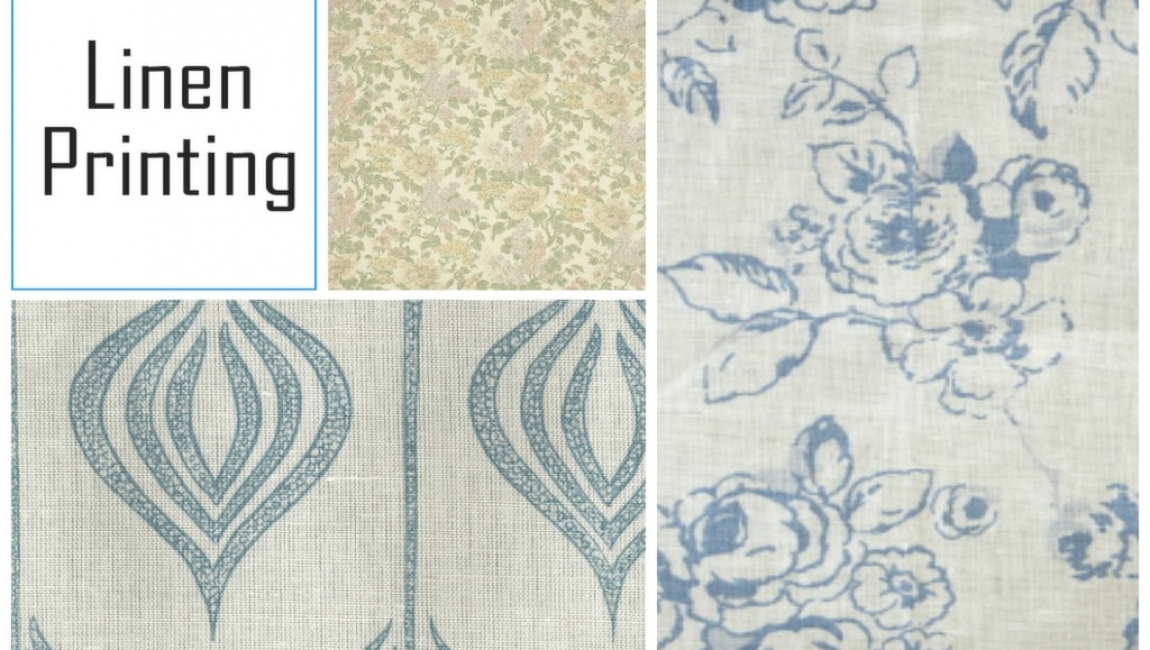If you are interested in printing on linen, you may have wondered what the process involved is. Linen is a fabric with a unique fiber structure and a special production process. The first step is preparing your design file for printing. After that, the linen fabric is steamed to absorb the ink and cooled to trap it. The linen fabric is then tested to ensure no production errors occur, and you can choose your print sample or fabric book to make your purchase.
Screen printing
If you’re interested in pursuing screen printing on linen as a medium for your art, here are the basics you should know. Screen printing on linen requires a chemical emulsion and an under base (a layer of white ink printed onto the fabric before applying the coloured design), which helps prevent dye migration. The final step of screen printing is to apply a slip sheet to the fabric item and secure it with a liquid adhesive.
The technique has become particularly popular in the DIY culture. The National Serigraphic Society, founded in the 1930s, distinguished between the industrial and artistic uses of the process. Andy Warhol, an American artist, began utilizing the medium for fine art in the 1960s, calling it ‘pop-art’, a style that involves creating multiple copies of an image using the same screen. His most famous work in this medium is the Marilyn Diptych.
To begin your screen printing project, you should first prepare the fabric. Choose a black fabric for the basis. Then, prepare your stencil by using the appropriate design software. For this purpose, you can use a photo or a photograph to separate the colours. Screen printing on linen will depend on the quality of your design. After deciding on the design, you should spread the polyester mesh over the frame. You may apply an adhesive stencil to the mesh. Make sure to fill in the negative space around the design.
A common problem with polyester fabrics is dye migration. The dyes in polyester tend to leach into the fabric when exposed to high temperatures. Using the wrong temperature may cause the fabric to shrink, melt, or skew. Try using dark-coloured ink and a dark under the base to prevent this. If you’re unsure about the temperature, use a synthetic fixer like Permaset. While screen printing on linen may be difficult, it’s worth the effort.
Inkjet printing
Inkjet printing on linen is easy to create vibrant designs and images. Fabrics that are light and thin are best for printing on. White fabric works best when printing a color image. Light-coloured fabrics are fine if you’re printing a black image. Dark fabric will fade over time. To prevent this from happening, follow these tips for care. Listed below are the steps involved in inkjet printing on linen.
Reactive inkjet inks have been tested for inkjet printing on linen. These dyes are water and chlorine-resistant. Reactive dyes, on the other hand, react to natural fibers. Inkjet inks for linen are designed to achieve this result. The range of colors reproduced on linen fabrics is limited. Bleached linen fabrics are most similar to paper color reproductions. Natural linen fabrics have low color saturation because they are dark, suppressing the dye color.
Fabrics need pretreatment before inkjet printing. Most conventional fabrics must be treated with a chemical solution to make them suitable for inkjet printing. Pretreated fabrics must then be ironed onto a baking sheet to go through the printer. If you plan on using the inkjet printer on a linen fabric, it’s important to get a high-quality fabric sheet. EQ Printables fabric sheets are better than the others because they have higher thread counts and solid black tones.
Fabrics used in inkjet printing are commonly called photo fabric. These photo fabric materials are thicker than normal quilt fabric. The fabric is designed to be compatible with both inkjet and all-in-one printers. They are especially useful for foundation-pieced quilt blocks, as they don’t distort delicate stitching. Unlike dyed fabric, photo fabric will dissolve in water. It is also easy to copy with any type of marking pen.
Offset printing
Offset printing is a process that transfers an image from a metal plate to a rubber roller. This rubber roller applies the ink to the print medium, producing a sharp, crisp final image. The process is not for every print project, however. It is more economical to print in small quantities and then change the design in some cases. Offset printing is most commonly used for large-scale projects like record jackets and card games.
Offset printing on linen is a cost-effective option for medium to high-volume production runs. Because the material is not porous, offset printing on linen is a good option for high-end print projects. Offset printing on linen is an excellent option for high-quality marketing materials, such as brochures and magazines. But for smaller projects, digital printing is more cost-effective. It also yields fine-quality, long-lasting printed items.
The quality of the prints produced by offset printing on linen is unmatched. Using Pantone or true color schemes, offset printing allows operators to control the ink used on each Print. Offset printing on linen also produces sharp images, even on the most delicate linen materials. Offset printing is an excellent choice for those who want to create custom-made items that are durable and beautiful. This material is also a popular choice for high-end wedding invitations.
Offset printing on linen is a great option for those who want to add some character to their linen wedding invitations. This traditional printing method involves the etching of images onto plates and then transferring them to a blanket or sheet of paper. Most offset presses can print two colors at once. For centuries, the printing press was the only printing method. Now, nearly 40% of printed goods are produced by offset technologies. When looking for linen, choose paper suppliers that offer linen finish papers. Check the color and grain direction of the paper before committing to a paper supplier.
Fusible web
If you’re planning to print on linen, you can use a fusible web. The main thing to keep in mind is that you should apply the fusible on a pre-washed piece of fabric. This will prevent a permanent fuse from occurring. While unwashed fabric will still appear to adhere to the fusible, it will actually come away from the fibers of the linen.
You can also use heat n bond lite, which is made with paper on one side and a layer of fusible material on the other side. Once you’ve done this, you can place the fusible web in the printer tray and start printing. To print one page at a time, you can simply select File and then choose Print. The next step will be to transfer the image onto the fusible web.
Fusible web is available in different shapes and sizes. The lite and Featherlite versions can be used for applique. Heatnbond lite is a lightweight fusible web that is compatible with inkjet printers. You can use them to print single or layered designs on linen. They are acid-free and can be washed. You can use them again so that they last for a long time.
To fuse a piece of fabric to another piece of fabric, you should use a fusible web. It comes with a removable paper backing and glue. Once you place the fusible web on top of the fabric, you can then press the paper side of the fabric to the fabric and fuse it. This step is very important, as over-fusing will cause the glue to harden and the fabric to be stiff. Similarly, you should use fusible web for applique and quick applique.
Blind stamping
Blind stamping on linen can be an elegant and sophisticated way to decorate your home. It is easy to do and produces high-quality results. You can create your own custom stamps using inexpensive materials. Stamps are usually available for purchase, and you will need a flat working area and a backing sheet. The fabric should be well-washed and ironed to remove any wrinkles. It is also important to press your fabric so that the paint dries properly and is evenly spaced on the fabric.
Blind stamping is a very subtle way to decorate finished items. While it can be an effective way to decorate items, you must be very careful when using blind stamps. If you are using genuine leather or bonded leather, you should use a good quality stamping compound. You can also use PU and vinyl if you don’t mind the contrasting colour. If you are using vinyl or PU, remember that it may show some cross-hatching on the backing fabric. Your client may not be happy with this look.

